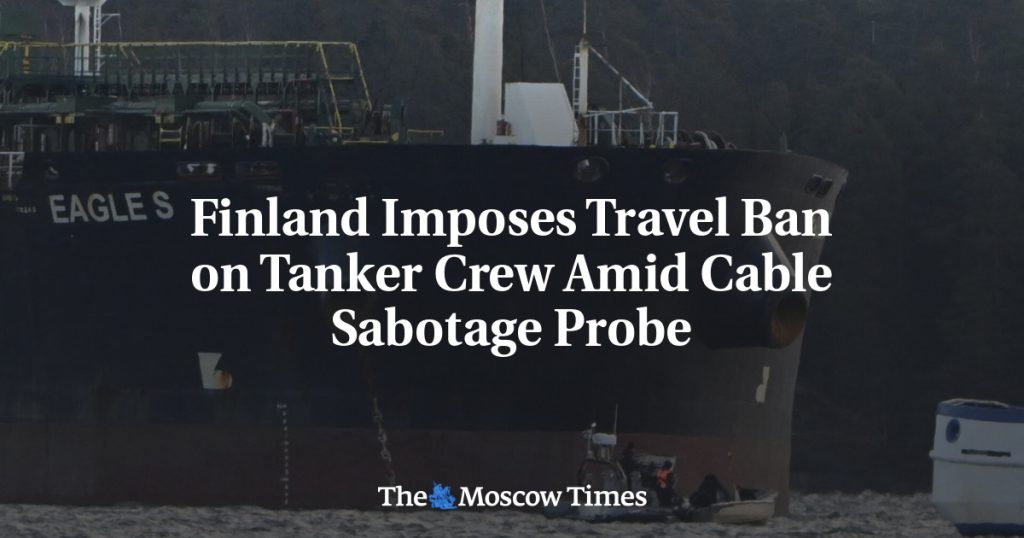Finnish law enforcement authorities have imposed a travel ban on seven crew members of the oil tanker Eagle S as part of an ongoing investigation into the severing of an undersea power cable in the Gulf of Finland last month. The crew members are suspected of involvement in the damage to the Estlink 2 submarine cable, which links Finland’s electricity grid with Estonia. The tanker, flying the Cook Islands flag, is currently anchored near Porvoo’s Kilpilahti oil port, where crime scene investigations and crew interviews are ongoing. Detective Chief Inspector Elina Katajamäki stated that the travel ban is a less severe coercive measure than apprehension or arrest, ensuring that the investigation is not compromised and that the parties can be reached during the process.
Authorities suspect that the tanker ship’s anchor damaged the cable, with Finnish Border Guard officials confirming that the tanker was missing an anchor, raising suspicions of sabotage. Investigators are conducting underwater probes in the vicinity of a previously identified dragging track near the ruptured cable. This joint operation, involving the Helsinki Police Department and the Border Guard, is expected to continue for several days in order to gather more evidence and information. The Eagle S, believed to be part of Russia’s shadow fleet transporting embargoed oil, reportedly loaded unleaded petrol in a Russian port and was en route to Port Said, Egypt, at the time of the incident.
The incident involving the Eagle S and the damage to the Estlink 2 cable is just the latest in a series of maritime incidents affecting critical infrastructure in the Baltic Sea region. In October, Swedish telecommunications cables were also damaged, highlighting the vulnerability of vital infrastructure in the area. Finnish President Alexander Stubb has called for vigilance against risks posed by such vessels and emphasized the importance of ensuring the security and integrity of the region’s maritime networks. The ongoing investigation into the damage to the cable and the involvement of the Eagle S crew members is part of efforts to address these risks and prevent future incidents.
The travel ban imposed on the crew members of the Eagle S by Finnish law enforcement authorities is intended to ensure that the investigation into the incident is conducted effectively and without compromise. By preventing the crew members from leaving the country, authorities aim to keep all parties involved in the investigation and to gather necessary information. The joint operation involving the Helsinki Police Department and the Border Guard is focused on collecting evidence from the scene and conducting underwater probes to further understand the circumstances surrounding the damage to the Estlink 2 cable.
The Eagle S, suspected to be part of Russia’s shadow fleet transporting embargoed oil, was on a journey from a Russian port to Port Said, Egypt, when the incident occurred. The missing anchor and the proximity of the dragging track to the ruptured cable have led investigators to believe that the tanker may have been involved in damaging the cable. As the investigation continues and more information is gathered, Finnish authorities are working to address the risks posed by such incidents and to protect critical infrastructure in the Baltic Sea region. The incidents involving the Eagle S and the damage to the Estlink 2 cable serve as a reminder of the importance of maintaining security and vigilance in the area.


